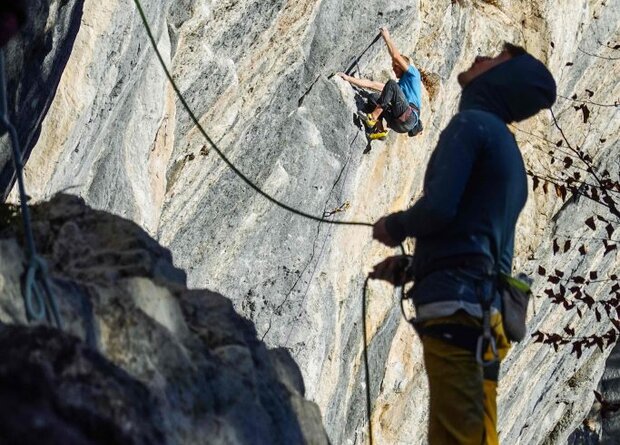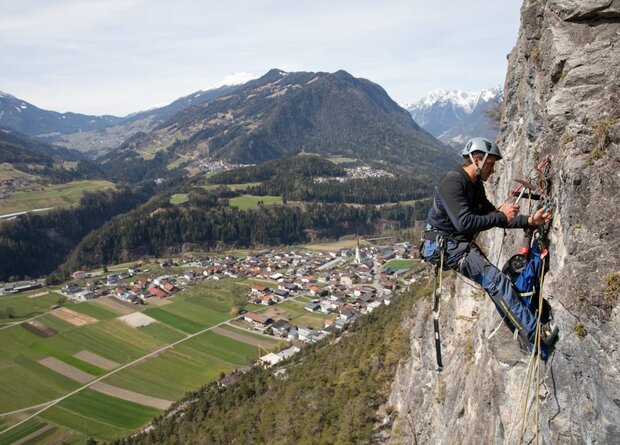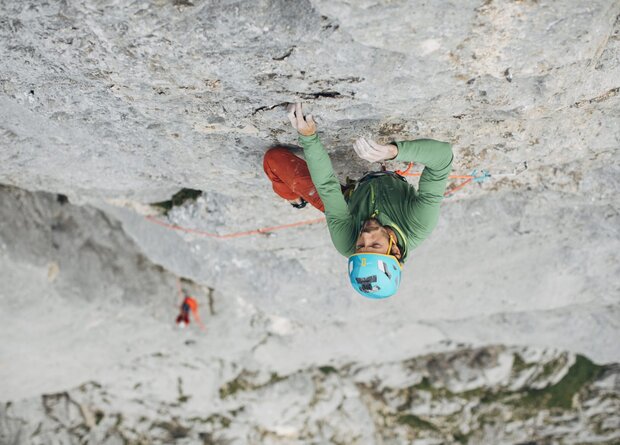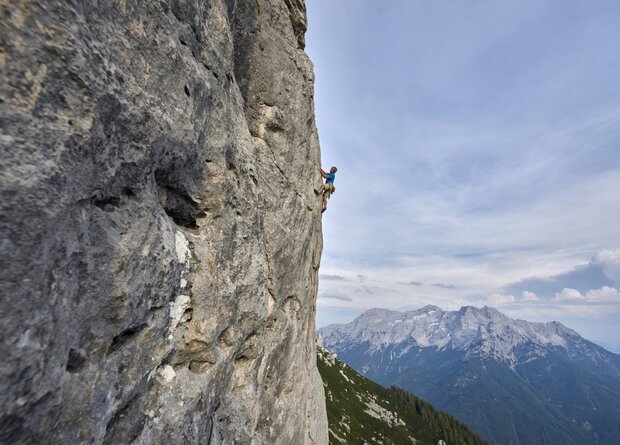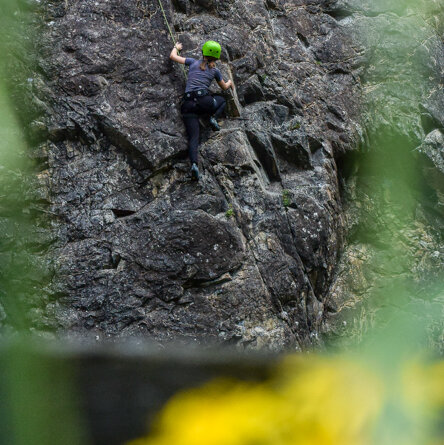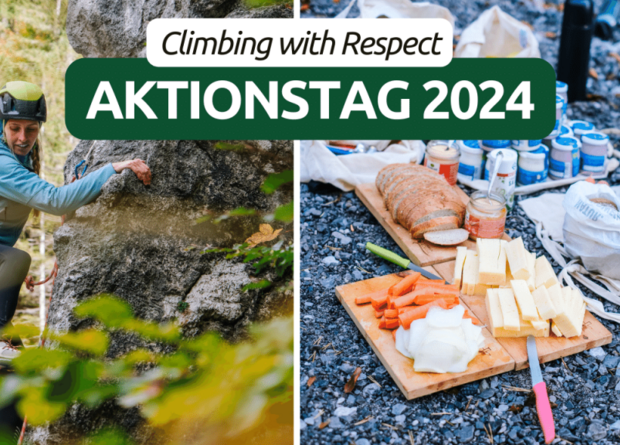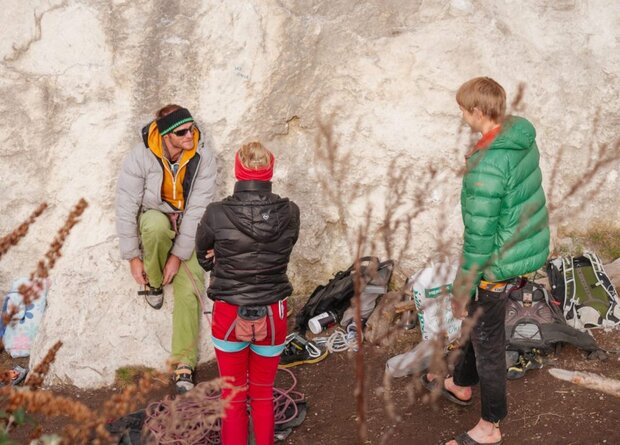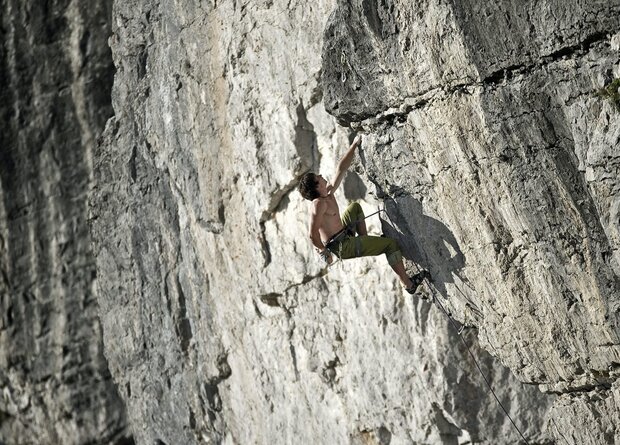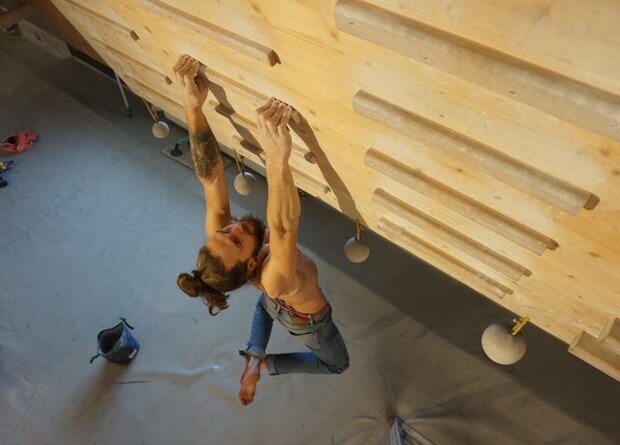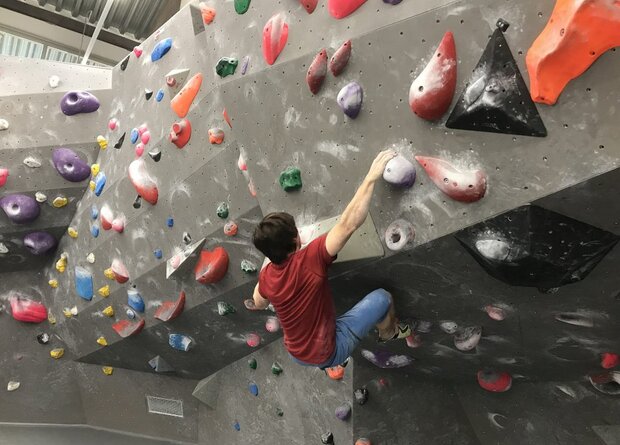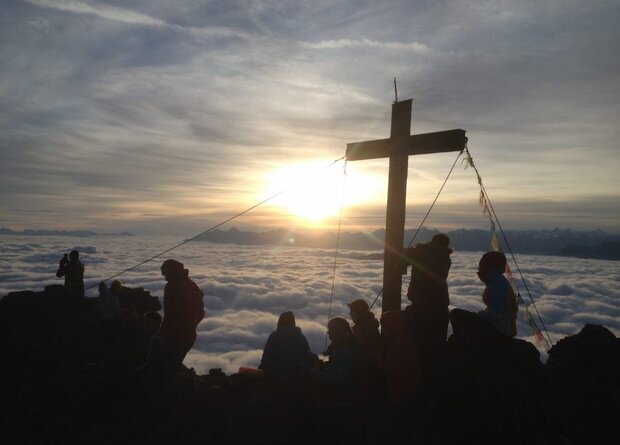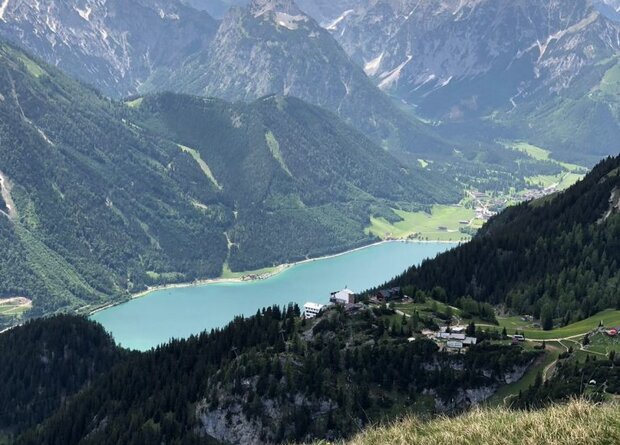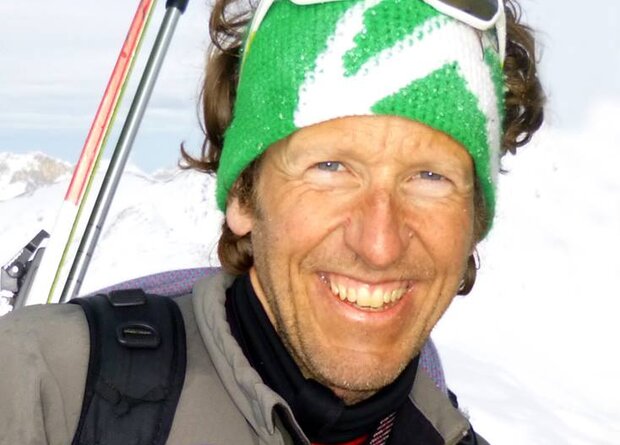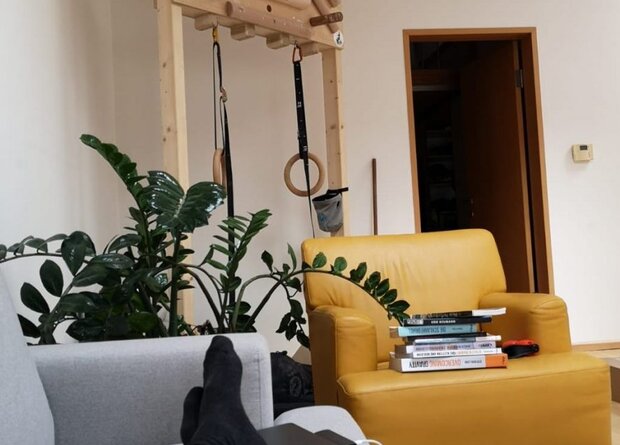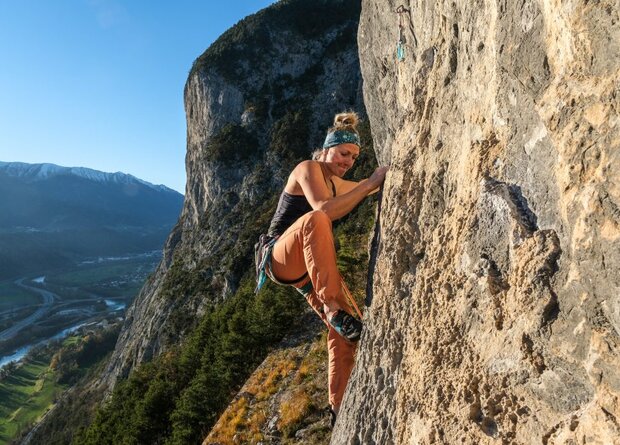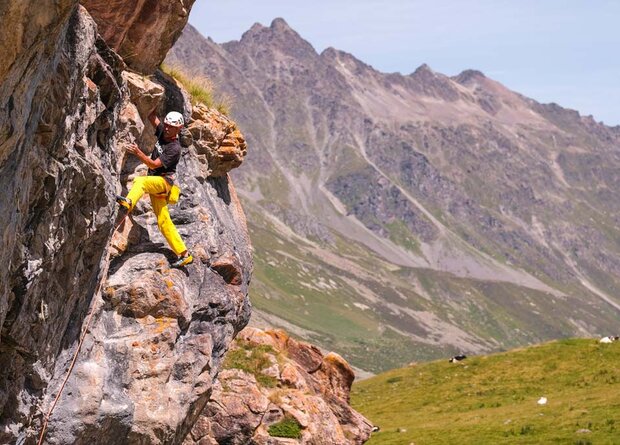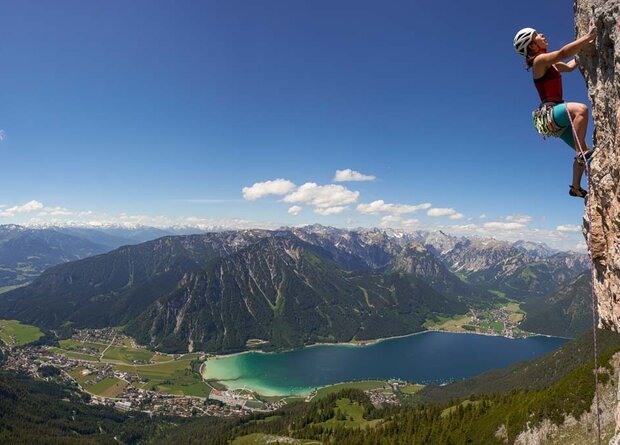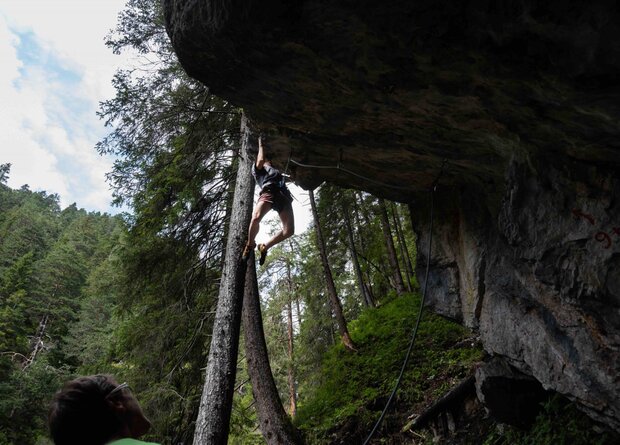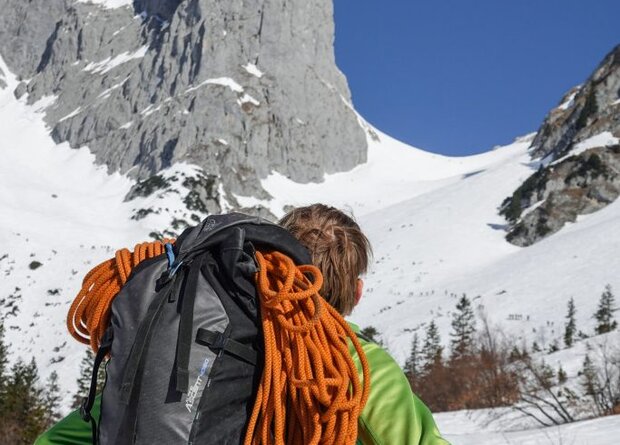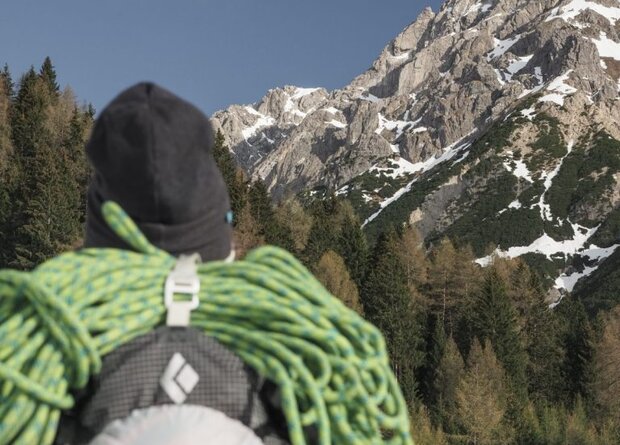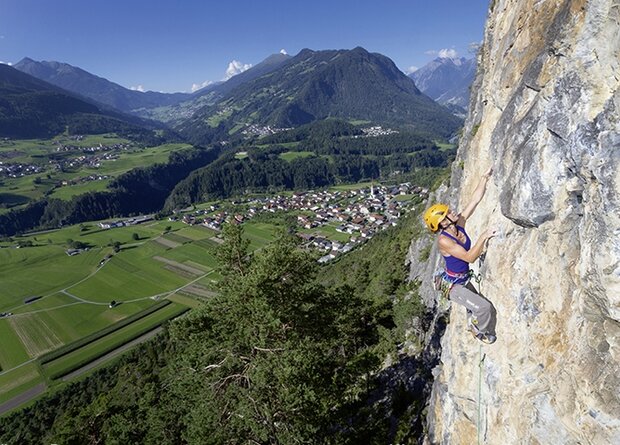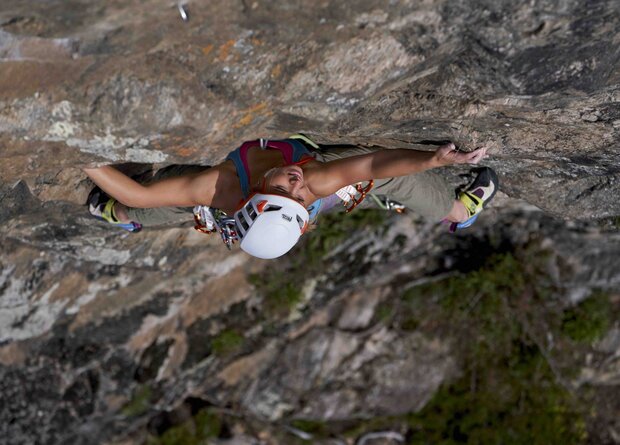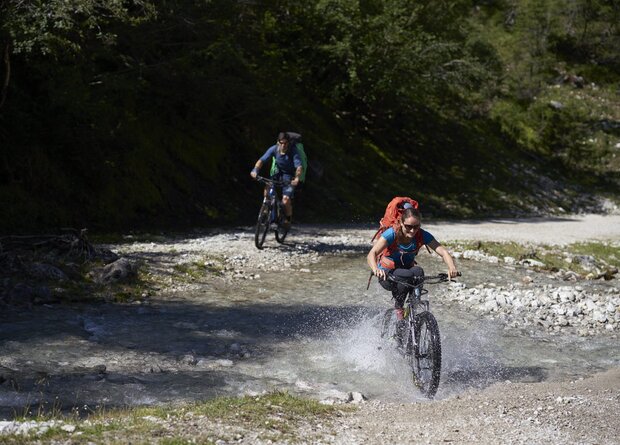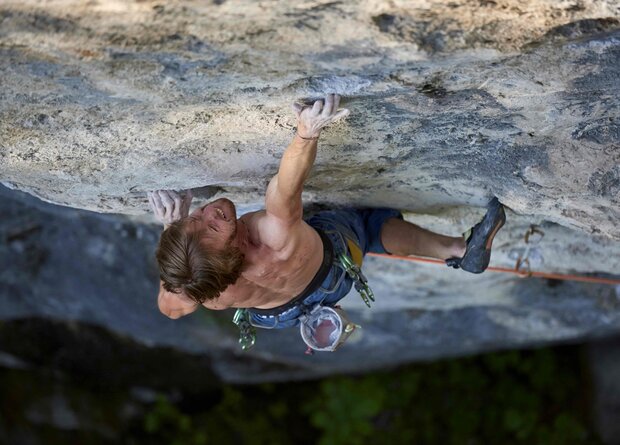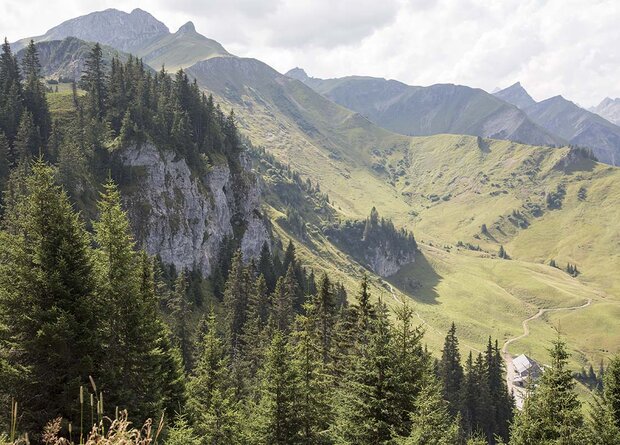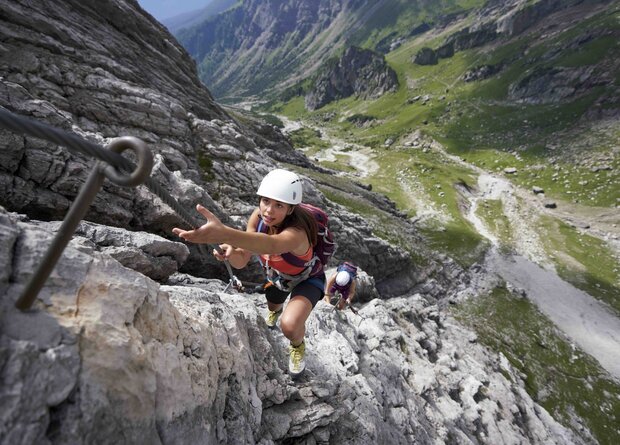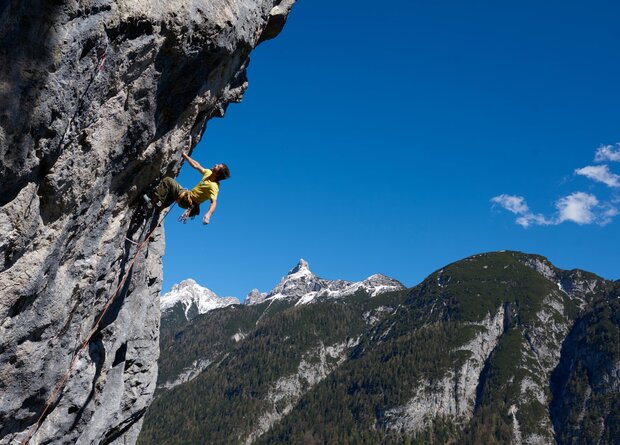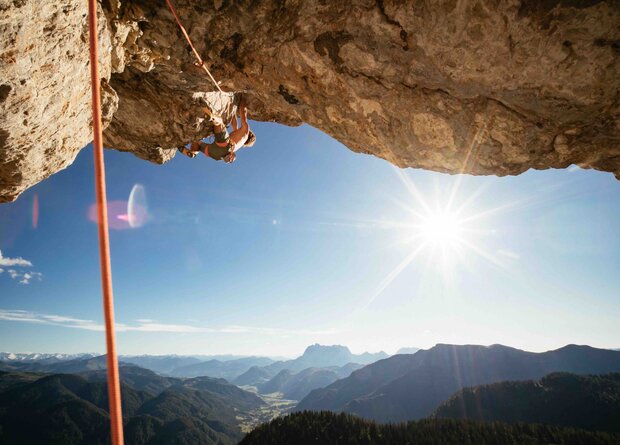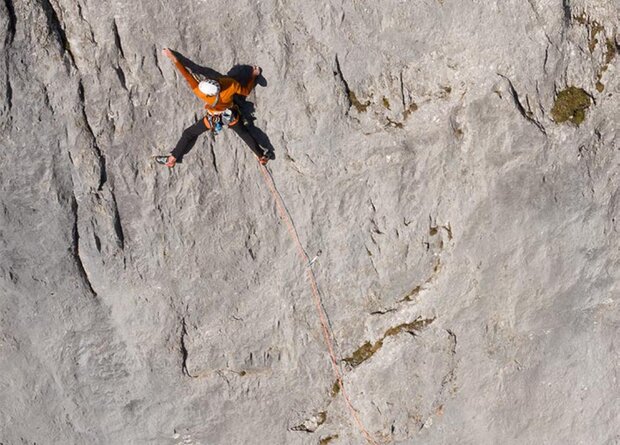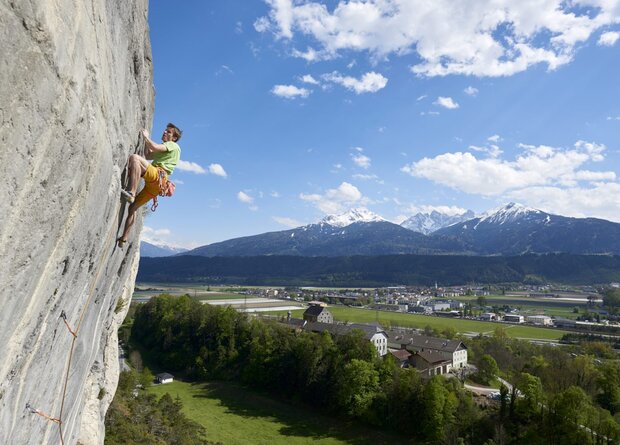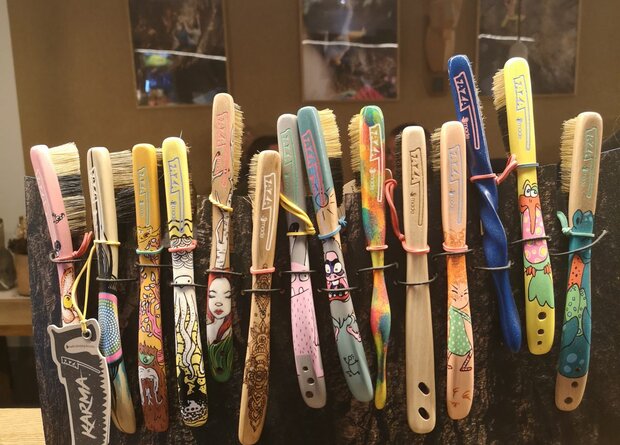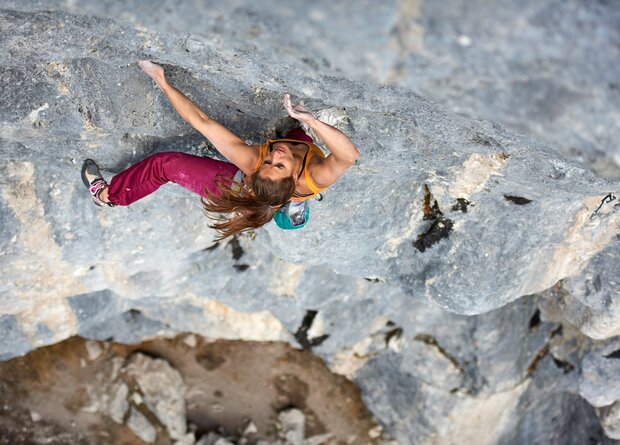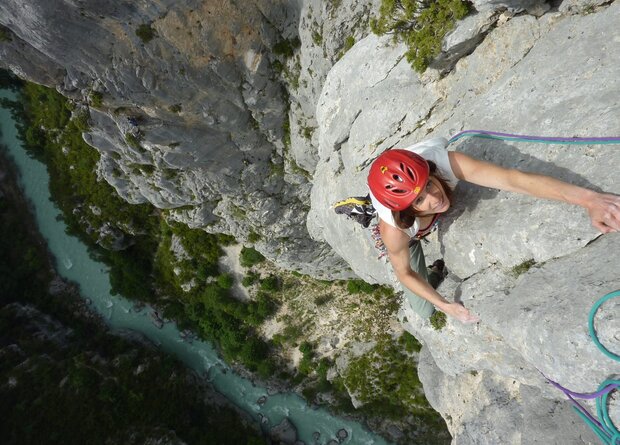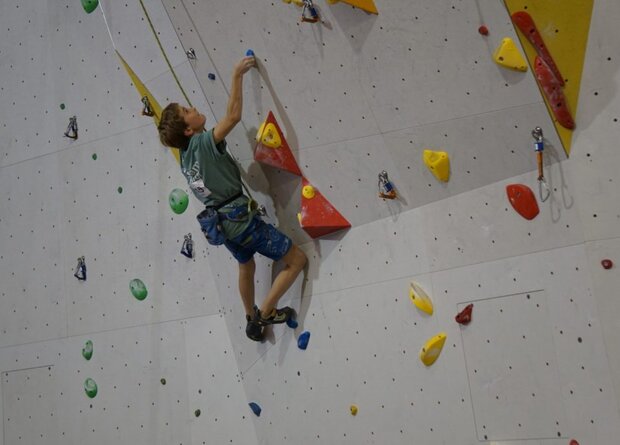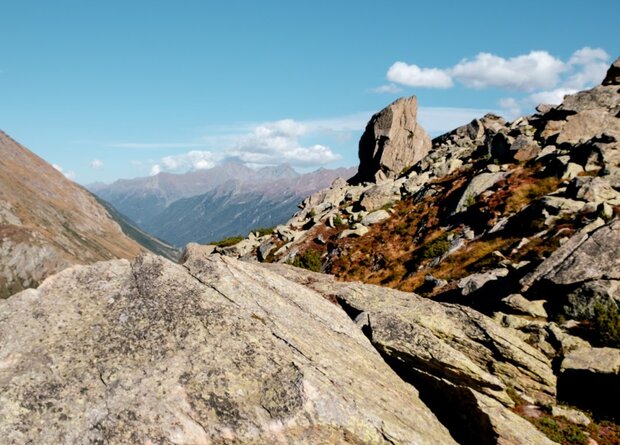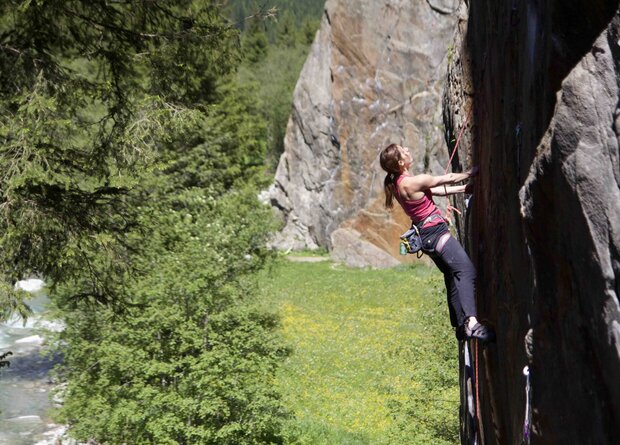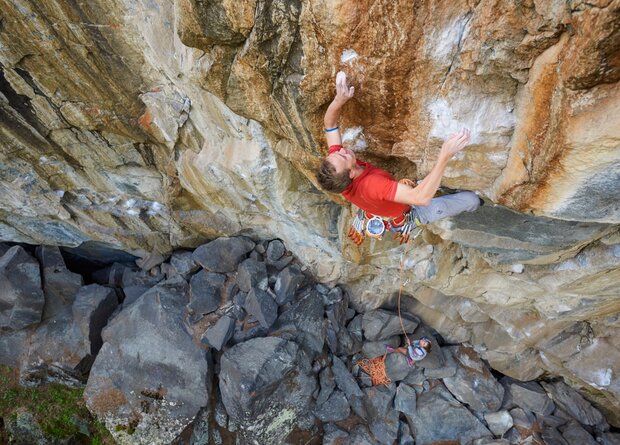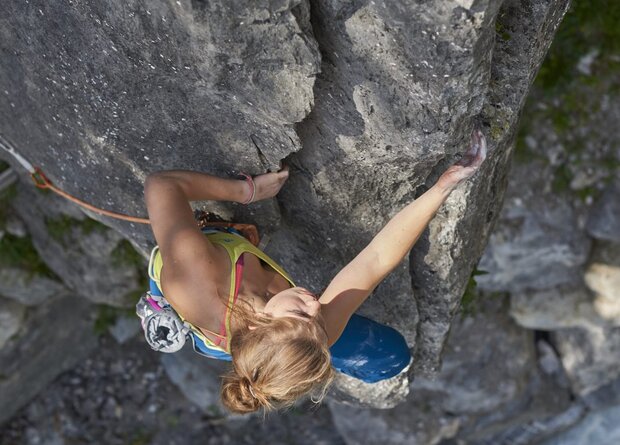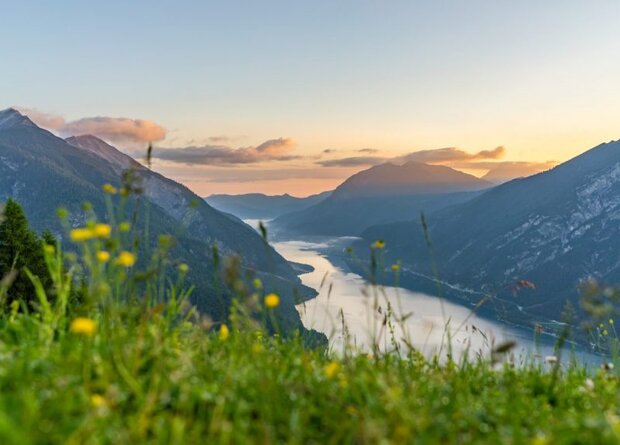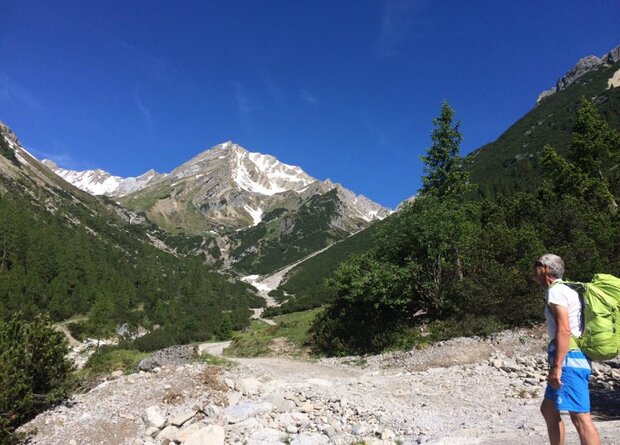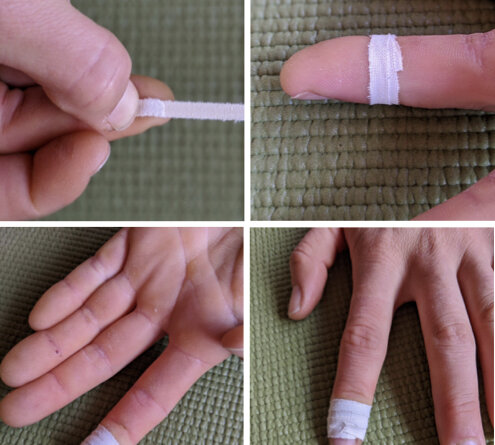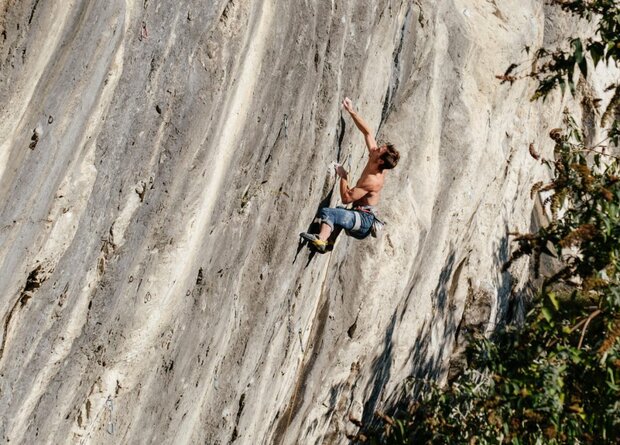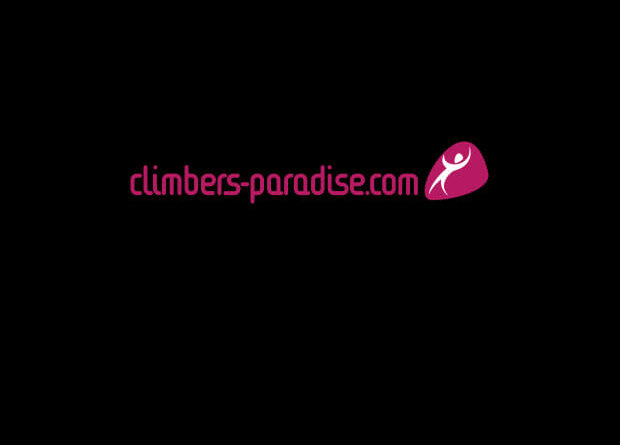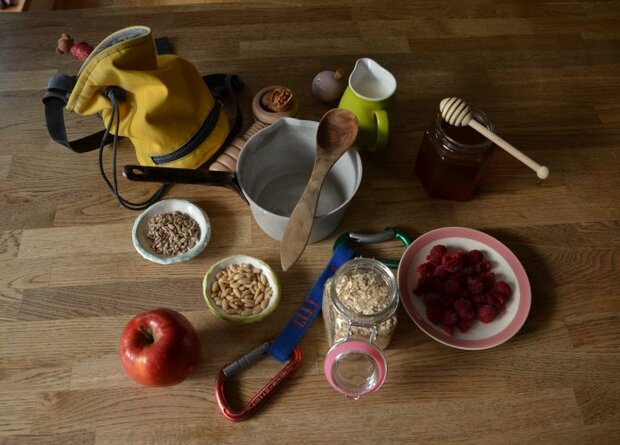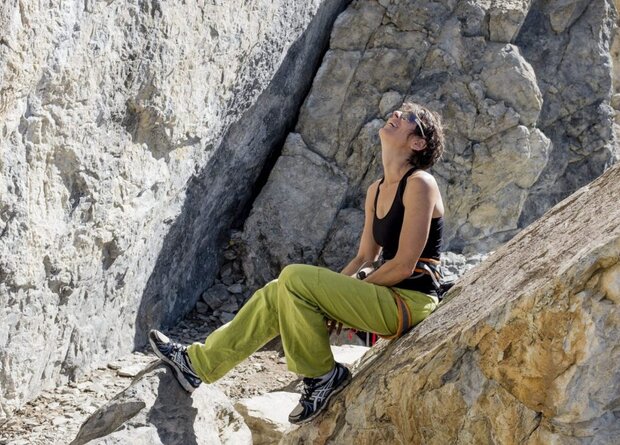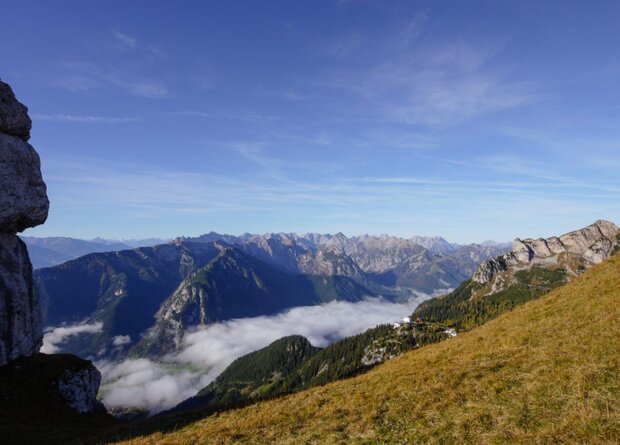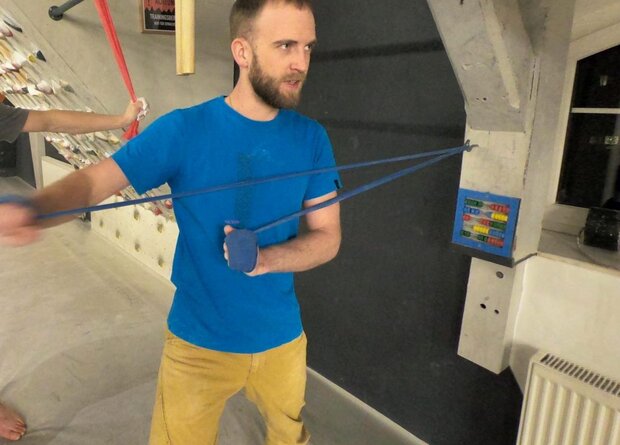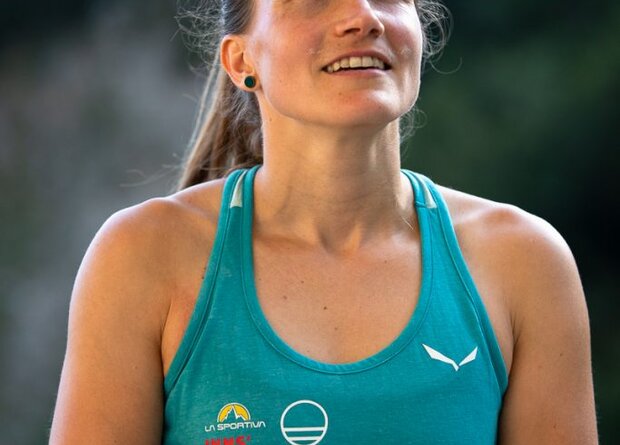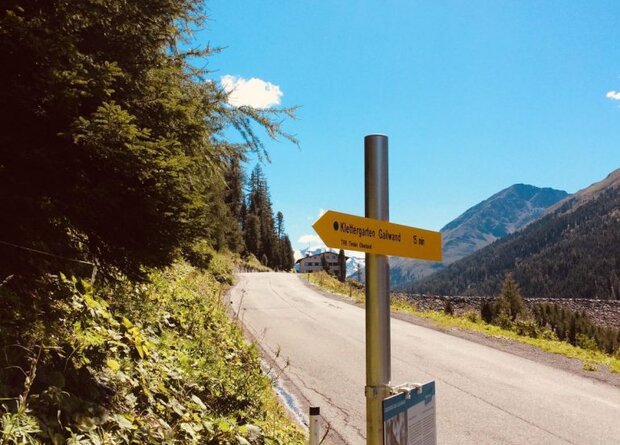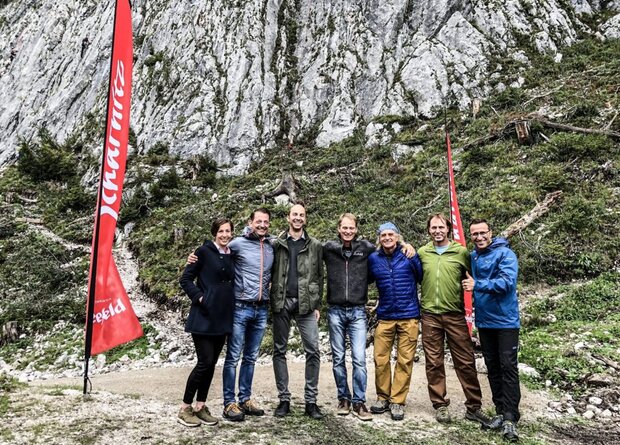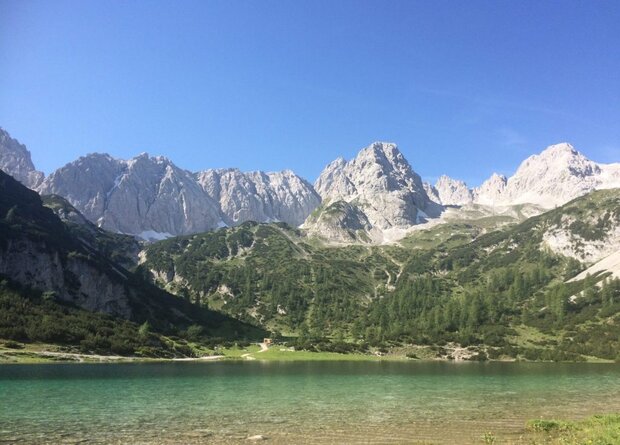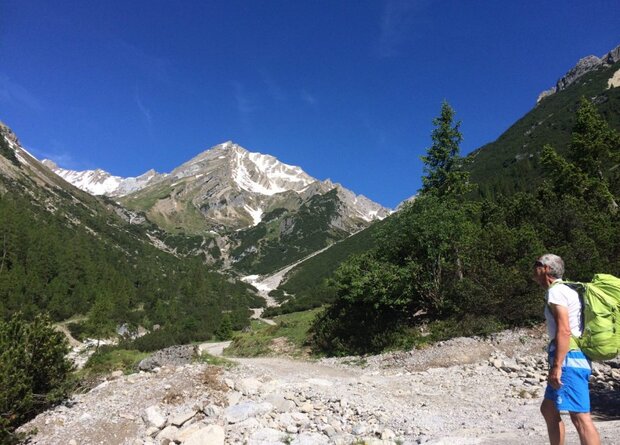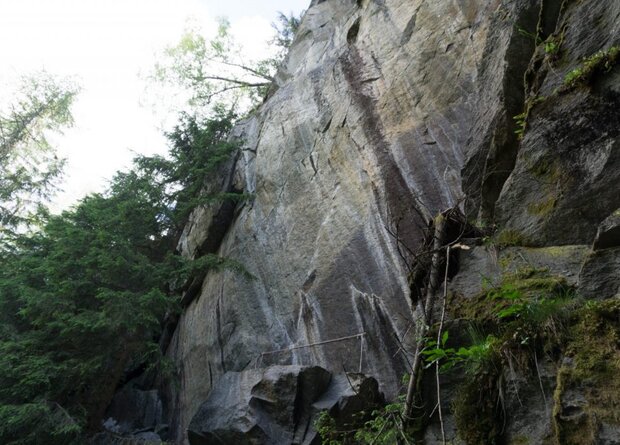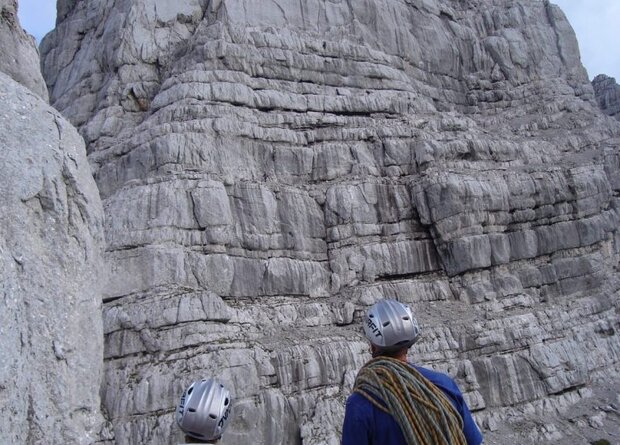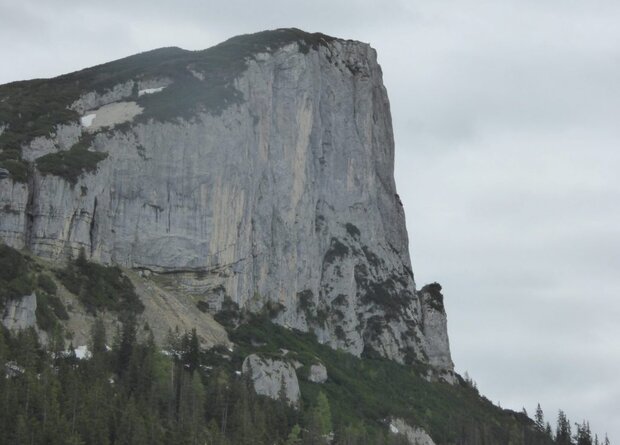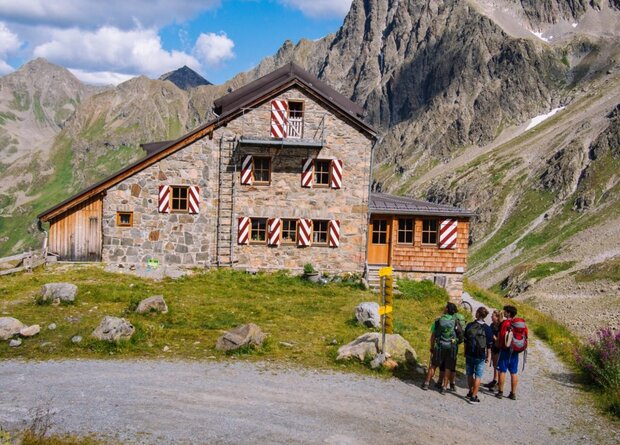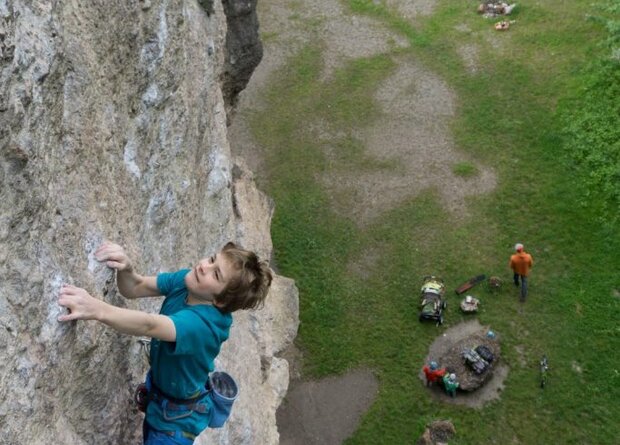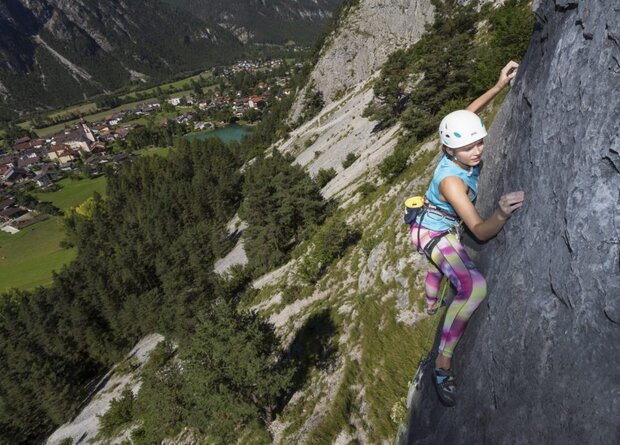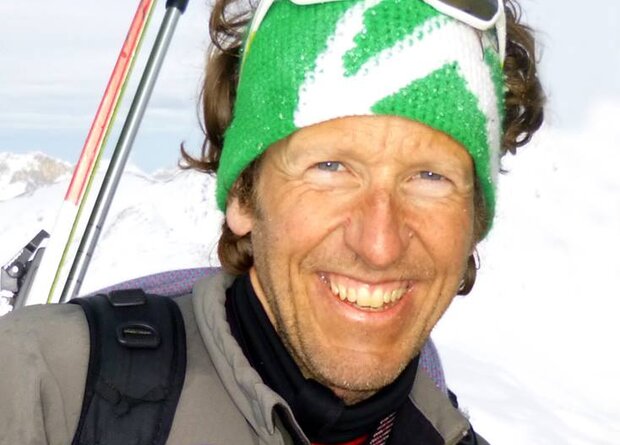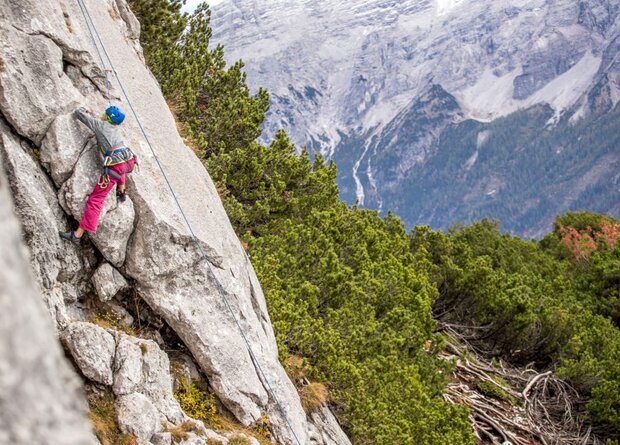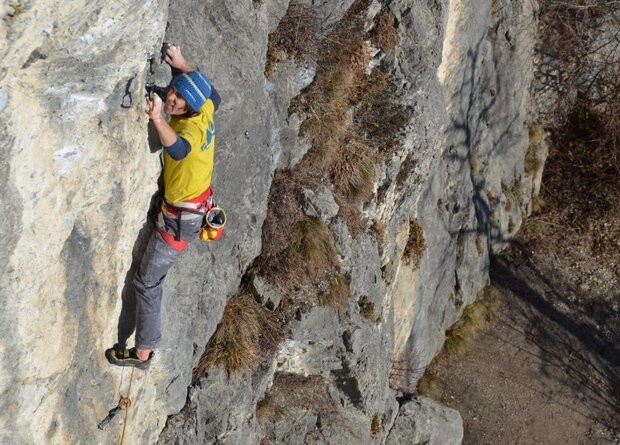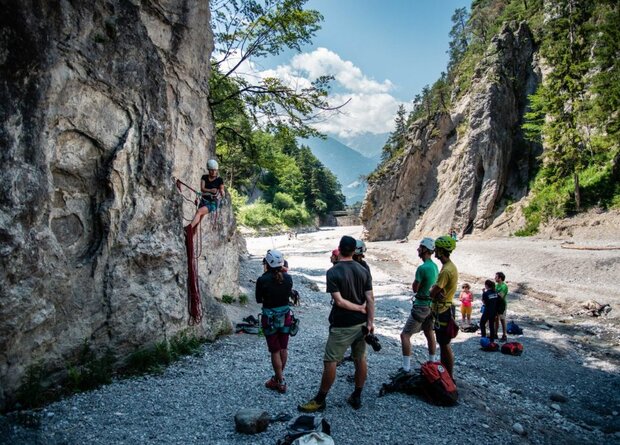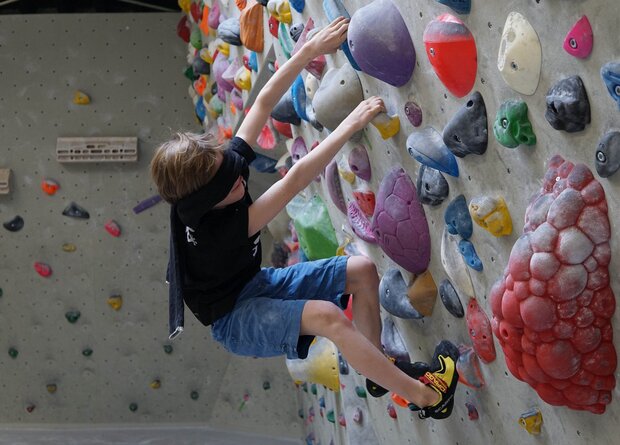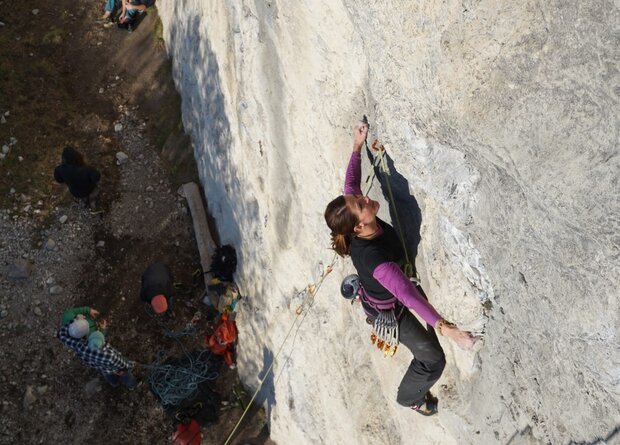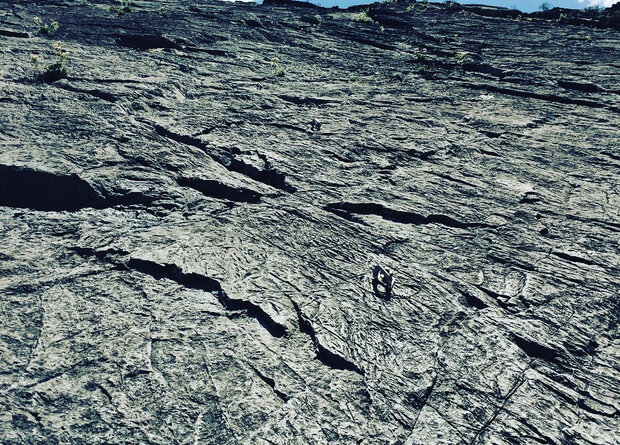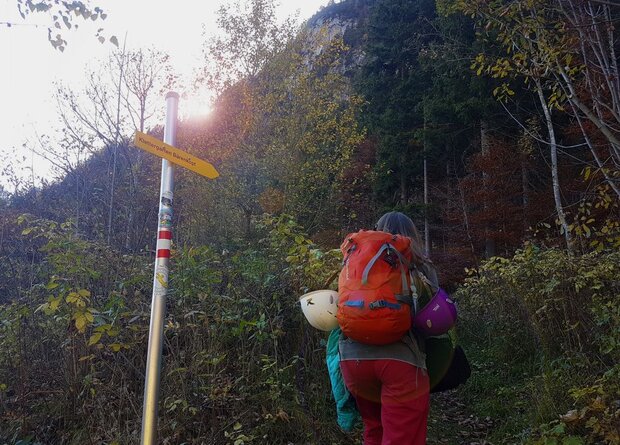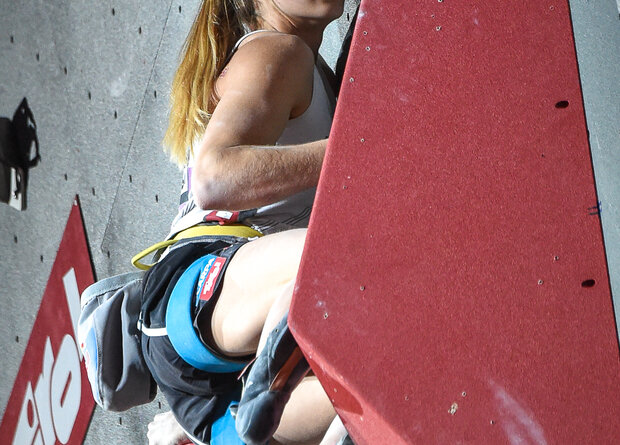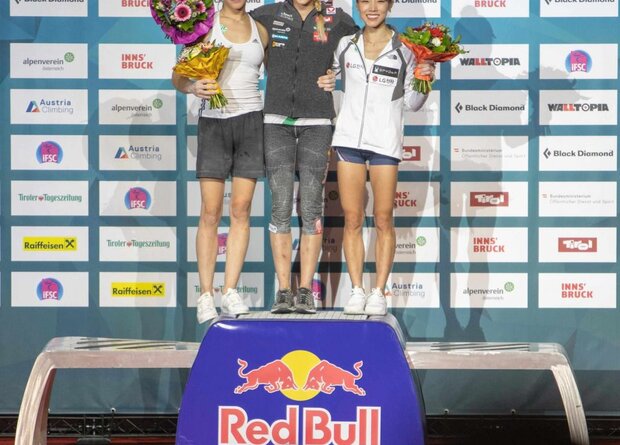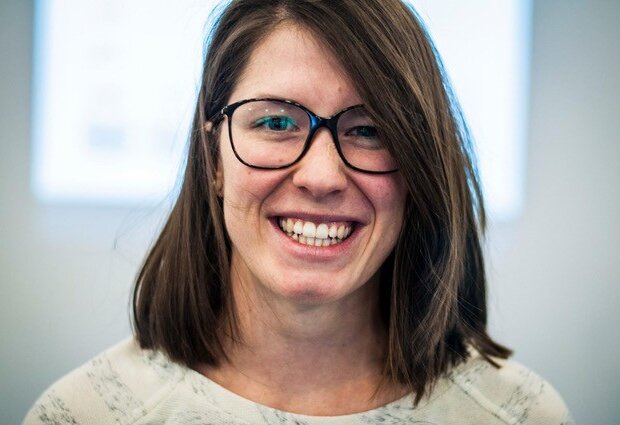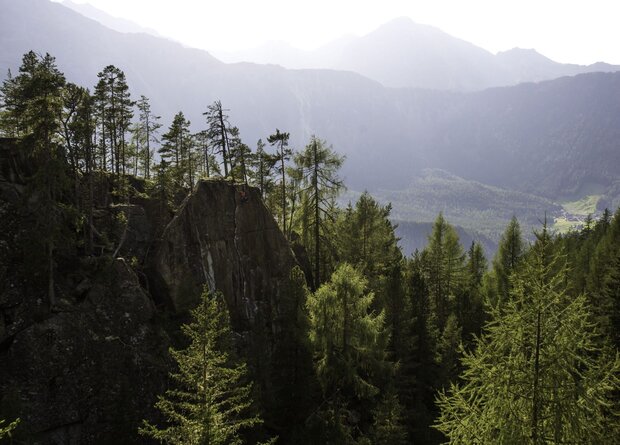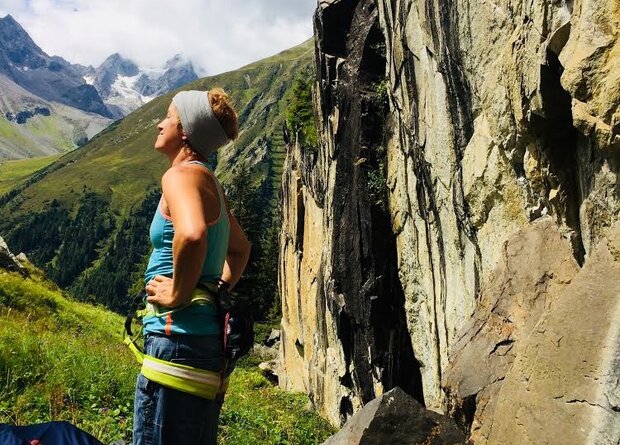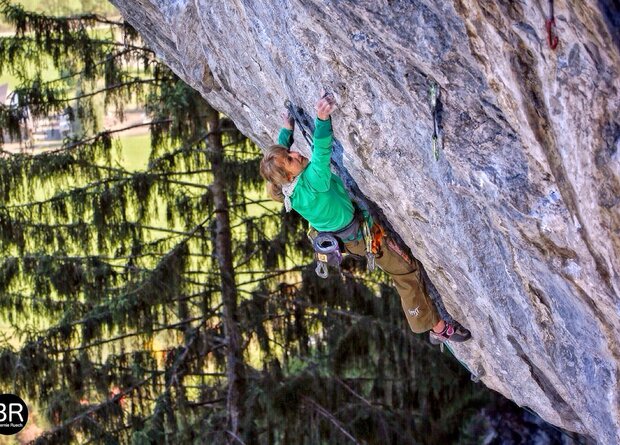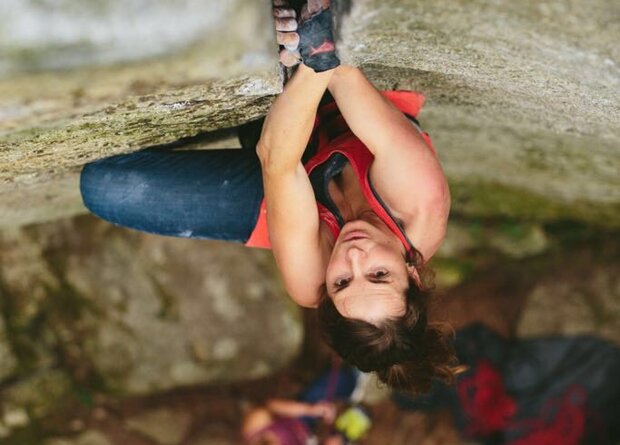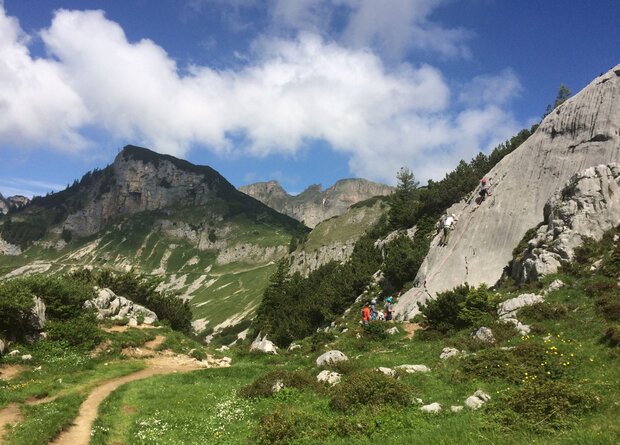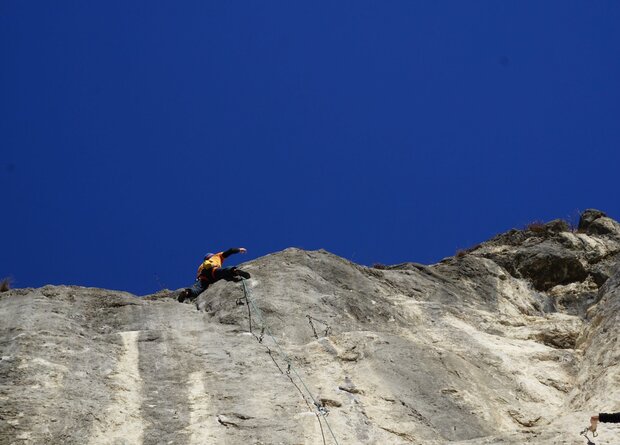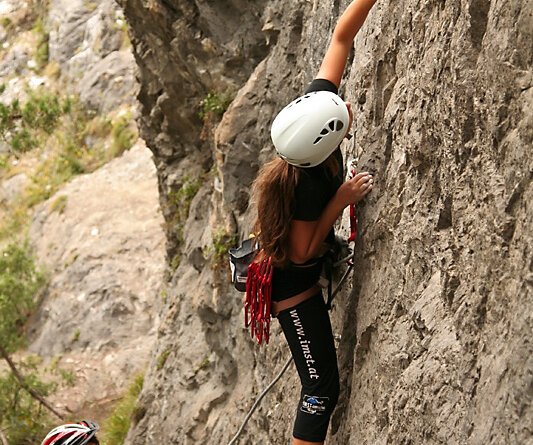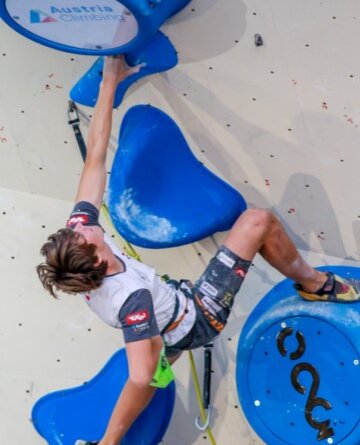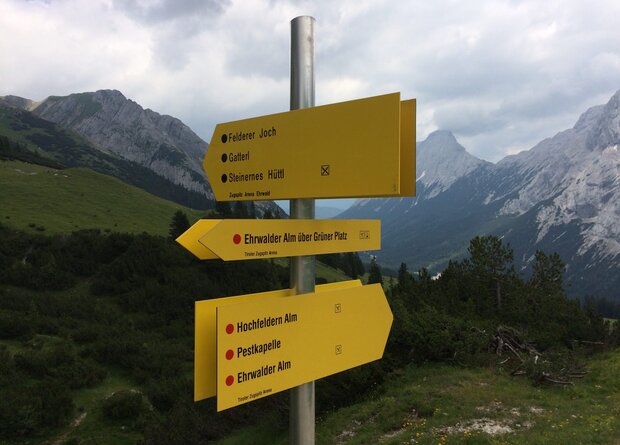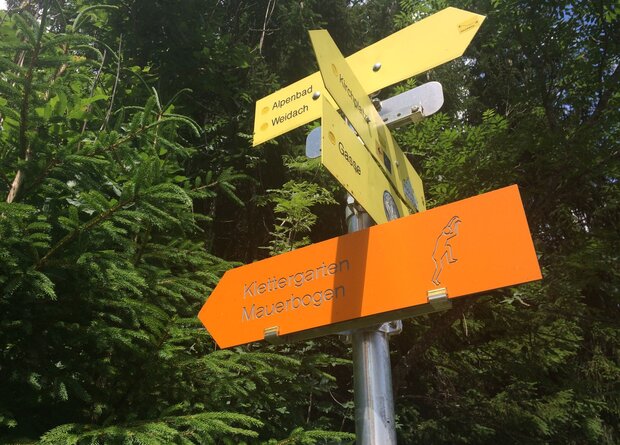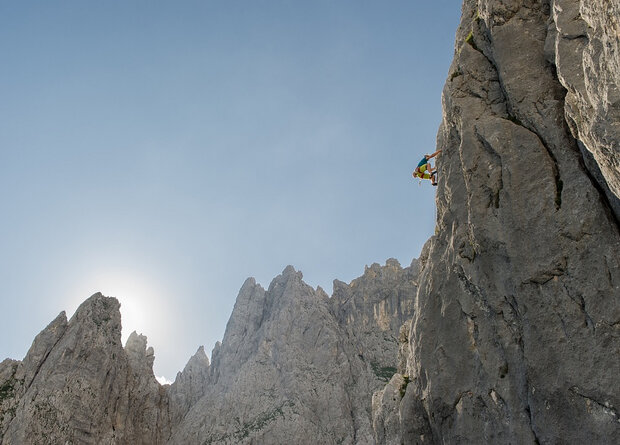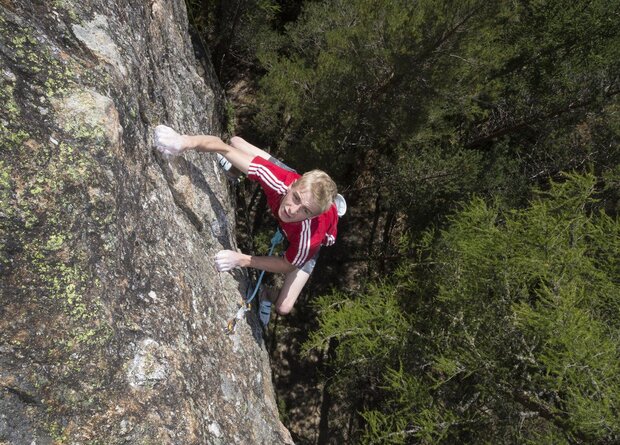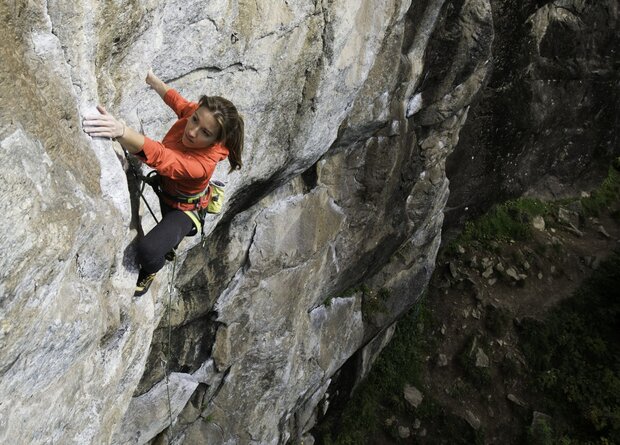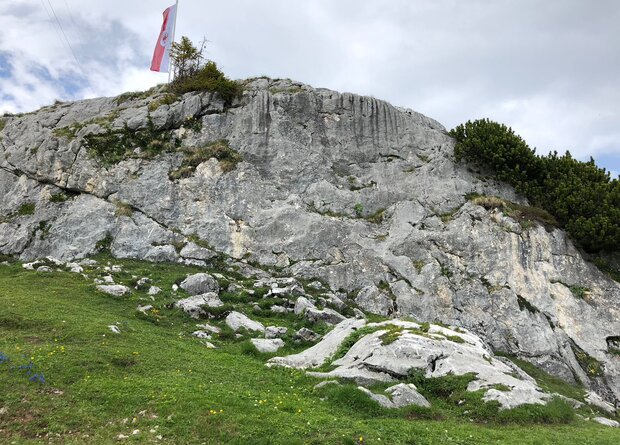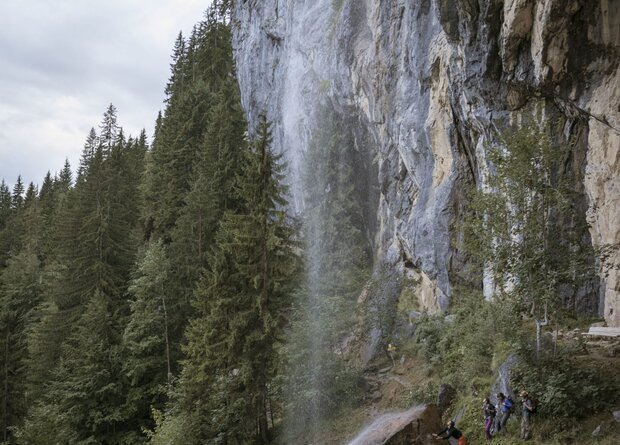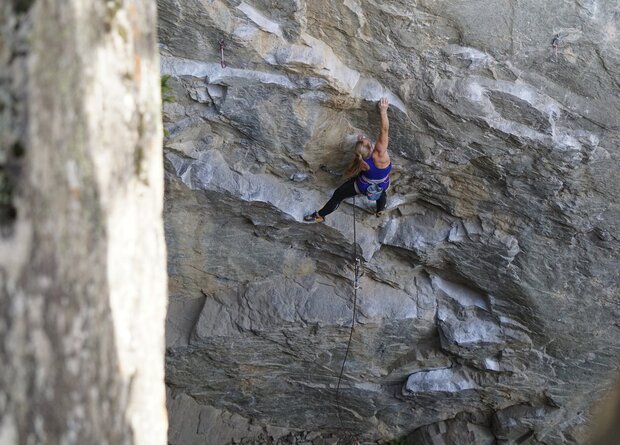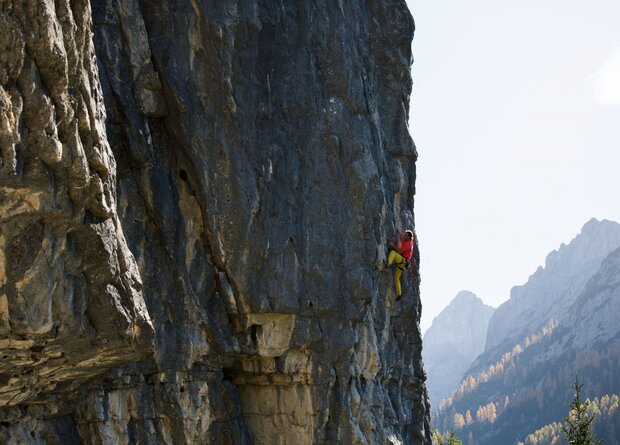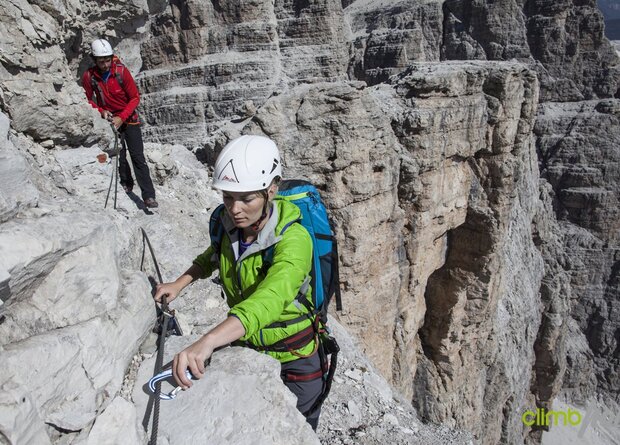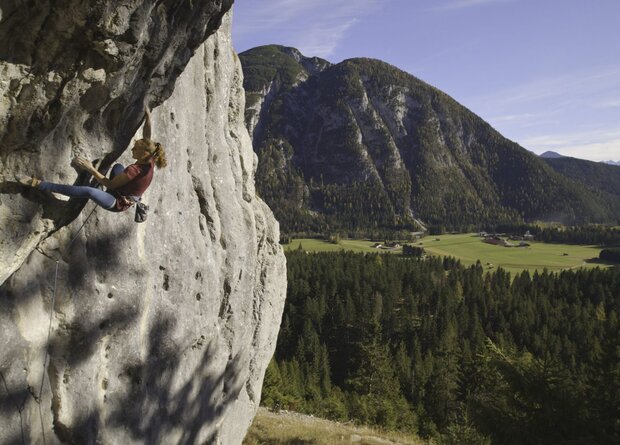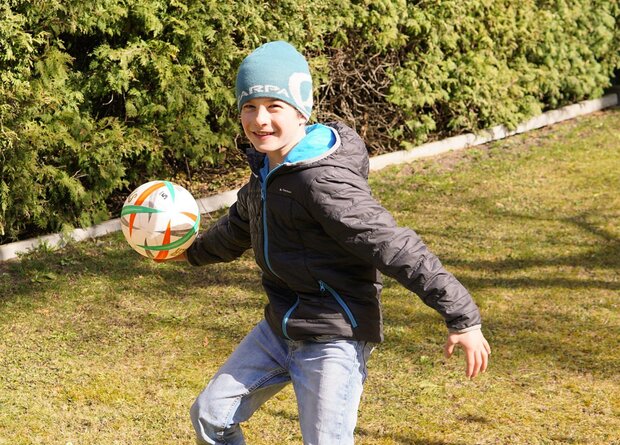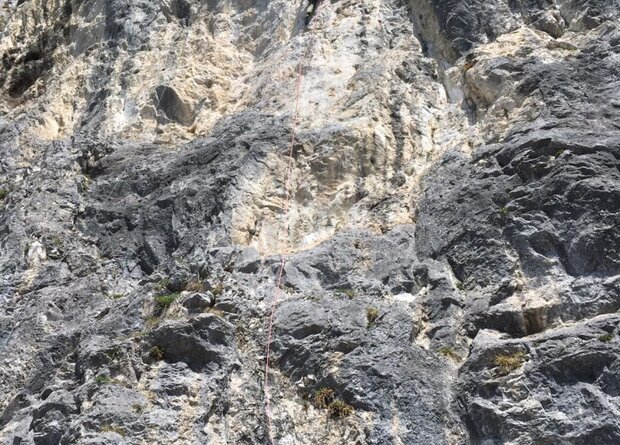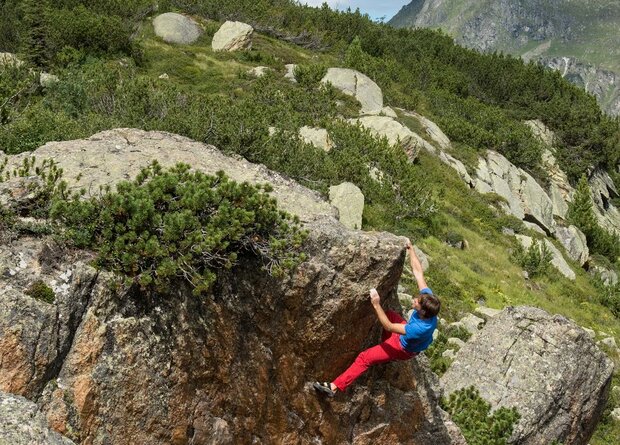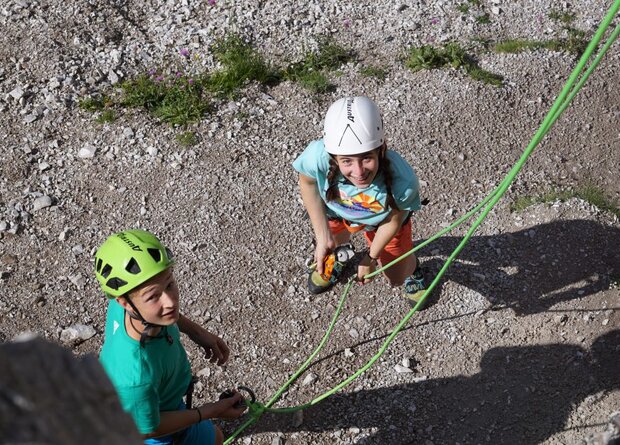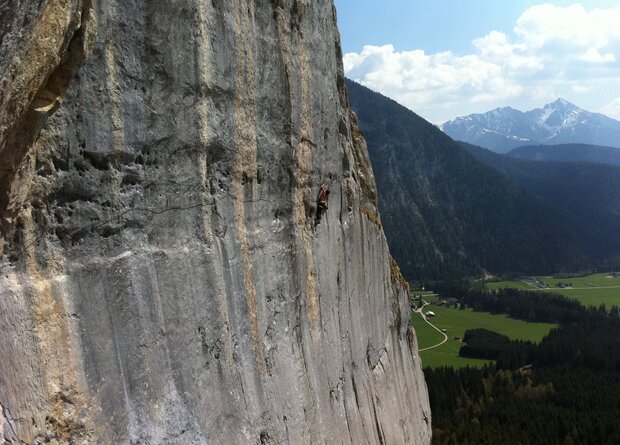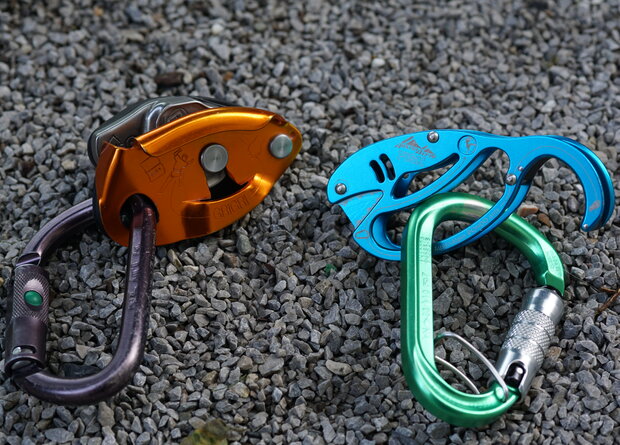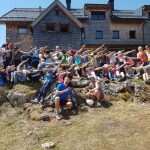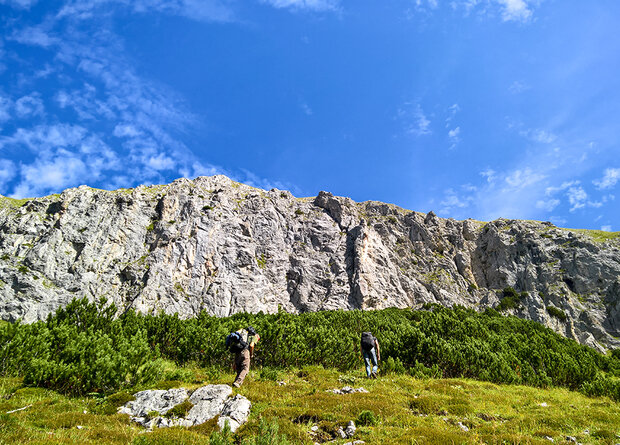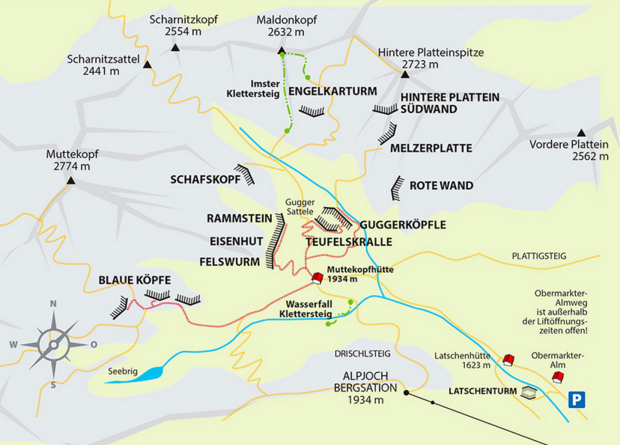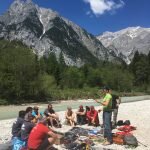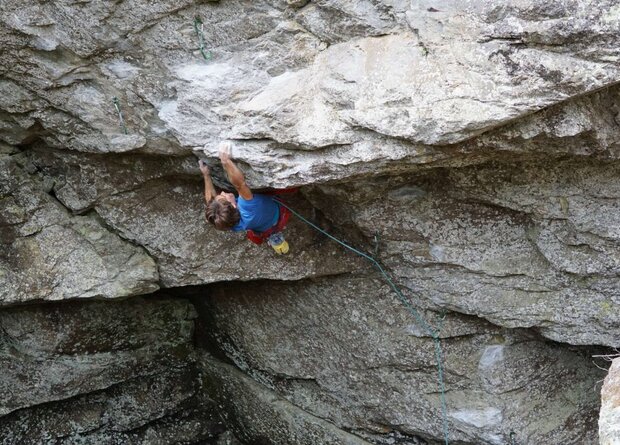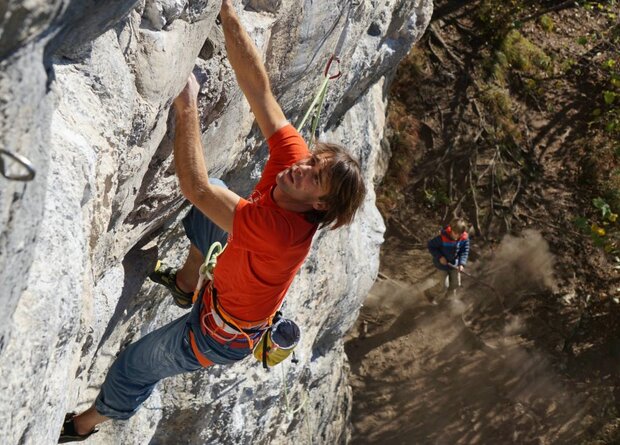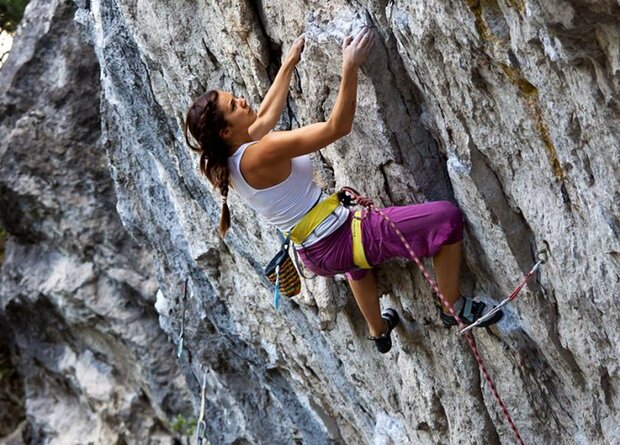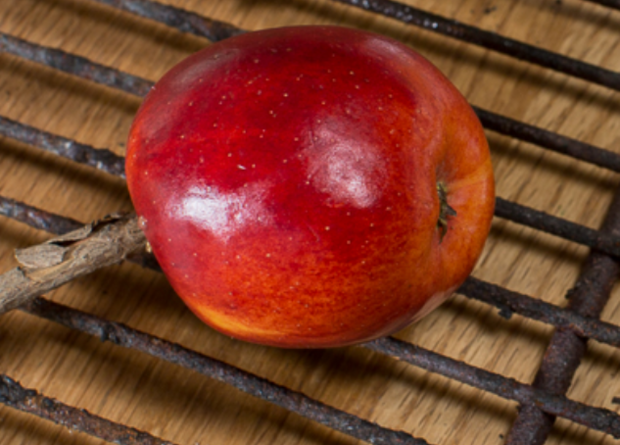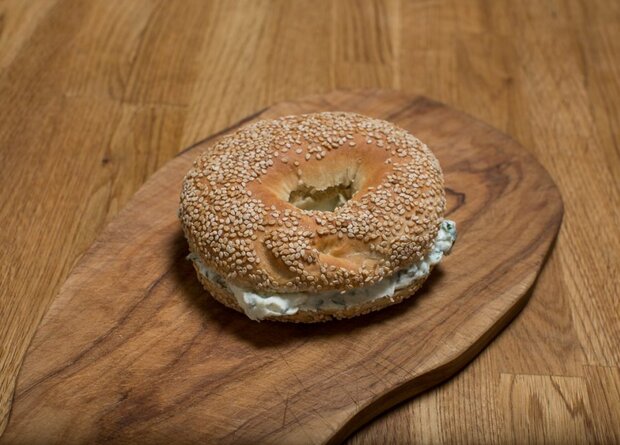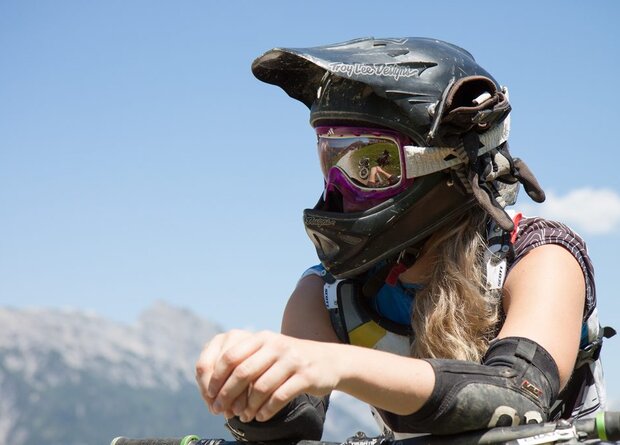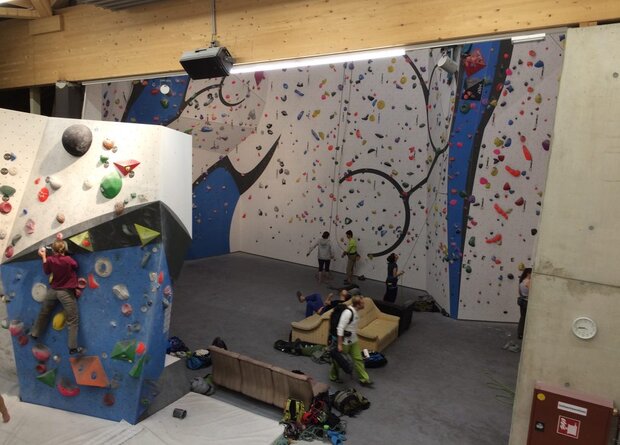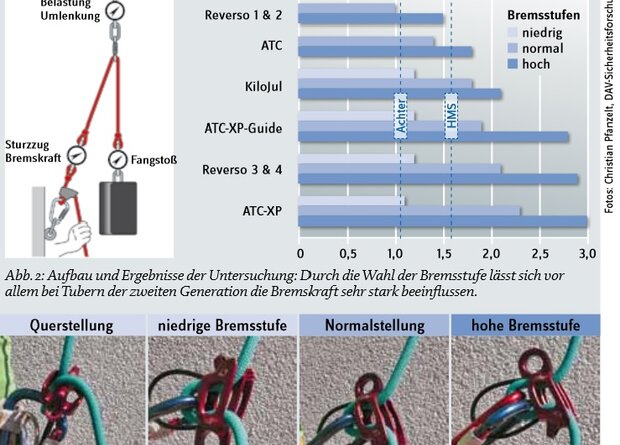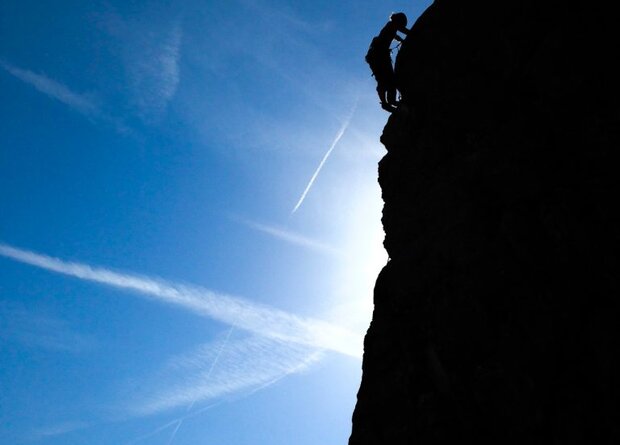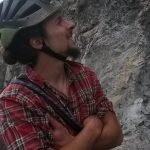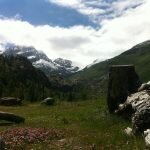Klaus Isele is someone who knows more about a climber's body than almost anyone else. The physiotherapist and osteopath has made a name for himself primarily with the "Isele method". This therapy option for treating finger problems has brought athletes of all abilities to him. From complete beginners who were too motivated to hang on to the finger board to professionals such as Anna Stöhr and Adam Ondra.
The latter in particular has appointed Klaus Isele as his personal physio guru and much more, as the Vorarlberg native made an important contribution to the realization of Ondra's masterpiece "Silence" (9c) in Flatanger: The world's most difficult route to date could only succeed because the two had not only perfected Ondra's repertoire of moves here, but had pushed it to the limits of what was possible.
Klaus Isele treating Adam Ondra, photo: Pavel Blazek
It remains to be seen whether everyone would manage the route "just" because they train with Klaus Isele. The fact that you can definitely do a lot to optimize your body and stay injury-free doesn't need any subjunctive. Klaus met up with us and answered a few questions.
Adam Ondra is one of the most versatile climbing talents - if not THE most versatile in the world. How could you help a climber who has perfected his skills to such an extent?
Klaus Isele : Someone who practices a sport at such a high level as Adam has a very distinct knowledge of what he can and, above all, what he can't do. In the run-up to our collaboration, Adam was able to tell me exactly what he needed and what he wanted to work on. With "Silence", this mainly concerned various movements that were not possible due to his joint radii. In other words, he had an idea of a movement that could not be realized. I suggested alternatives to Adam to make the impossibility of his idea possible. You have to know both the anatomy and physiology of the body, but above all you have to know how to assess an athlete. I would probably have created completely different solutions for someone else, or perhaps simply advised them not to attempt such a movement.
Klaus Isele has put together a customized therapy solution for Adam Ondra, photo: Pavel Blazek
Once Adam had decided on an alternative, he first had to learn it before trying to implement it in the route. So it took quite a long time before he even realized whether what we had come up with would work.
How important is the prevention of finger injuries when climbing?
Klaus Isele : Finger injuries are one of the worst things for a climber and yet there is a lack of common therapy methods or publications on what can be done both preventively and rehabilitatively. Taking a break from climbing is still one of the most common therapeutic measures and at the same time the most unwelcome. Some doctors or therapists who are unfamiliar with climbing may not be able to understand that this not only means that climbing is no longer possible, but that an entire social network may be lost, because it's "just a finger" anyway.
This makes your contribution to finger therapy all the more important for the climbing community. The "Isele method" has already made a name for itself. How does it work?
Klaus Isele: The Isele method is based on classic manual-therapeutic applications that are based on elements of osteopathy and physiotherapy. What is special is the way in which standardized, yet individual conditions are created in order to localize the pain points on the one hand, but also to make the success of the therapy quickly measurable on the other. This means that you can respond optimally to the individual patient, because every pain and every injury is individual, but above all you can already see improvements within one session. This is an enormous advantage for the patient, as you often get overcautious diagnoses based on a description of the complaint that is not very clear.
Klaus Isele takes a close look at injuries, photo: Eddie Folwke
This leads directly to the next point of my therapy: I never trust a single test to make a diagnosis, for example. Only if the medical history, physical signs and a manual test point in one direction can you say what is bothering the person concerned. An overly cautious diagnosis can lead to iatrogenic damage. This means that the injured person may limp for two weeks longer simply because they have received a frightening diagnosis and this leads to much more damage at a subconscious level.
You are only healthy again when you no longer think about the injury.
Klaus Isele: That's right. At the moment, a community of physiotherapists is developing who want to learn the methodology and then apply it. In addition, further scientific work is pending to prove the effectiveness of the Isele method. These developments are a great honor for me.
Is the great interest in learning the Isele Method perhaps also due to the fact that more and more people are climbing and there are more clients for the therapists?
Klaus Isele: There are a few trends in popular sport. Climbing is booming. But around 80 percent of gyms offer bouldering and only around 20 percent offer sport climbing. This trend is similar everywhere in America, Europe and Asia. As a result, there are many more injuries overall, as bouldering is far more stressful for the body due to the higher intensity. Not just on the fingers, of course.
Klaus Isele treats the whole body, photo: Eddie Folwke
Has the new competition mode also had an impact on the injury profile?
Klaus Isele: In competition, exhaustion tends to cause different injuries. The Olympic mode helps to separate the wheat from the chaff even more, because it's all about who can handle the high volume of training. This is coupled with a lack of nutrients, as a low body weight is clearly an advantage. A dangerous combination.
You have a YouTube vlog: "How to feel good as a climber". What is the concept behind it?
Klaus Isele:In the vlog, I present common injuries, how they occur and how you can protect yourself from them. The aim is for everyone to know how to help themselves preventively, because if you understand your body and know how to interpret minor aches and pains, you can take appropriate measures to avoid them in the long term. How can you protect yourself from yourself? =)
What do you recommend to stay injury-free?
Klaus Isele: It's actually very simple: above all, you shouldn't get carried away by the group dynamics of who does what, when and how often. The most important thing is to be aware of your own body and to listen to yourself. You have to take minor aches and pains seriously enough early on. The one who reacts earlier and therefore smarter is the one who climbs longer and more in the year.
Climbers should take every symptom seriously, photo: Anneliese Penzdorfer
